Education organisations outline new commitments for action on equality, diversity and inclusion in education
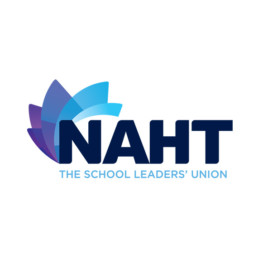
Written by NAHT
NAHT is the UK’s largest professional association for school leaders, representing more than 33,000 head teachers, executive heads, CEOs, deputy and assistant heads, vice principals and school business leaders.
Organisations working in the education sector have outlined new commitments for action demonstrating how they will play their part in improving diversity and representation within the education profession.
A ‘statement of action’ signed by fifteen key sector bodies and National Associations outlines the collective and individual commitments to help improve diversity in the profession. The statement of action states that “by being clear and transparent about our actions, we can give confidence to pupils, families, staff, governors and leaders that we are learning, listening and acting on their concerns and ambitions for equality, diversity and inclusion.”
The organisations have also called for more support from government in achieving these aims, saying:
“Discrimination and inequality continue to exist, and our organisations want to play a role in actively addressing this within the educational sector. It matters for the health, well-being and futures of our members, their staff and the pupils and communities that they serve.
“But while a sector-wide approach is essential if we are to see true progress in this area, this really must be matched by effective support from Government. If the Department for Education is serious about improving recruitment and retention of educational professionals from a diverse range of backgrounds, then it is vital that this is embedded across all facets of its work and is backed by appropriate funding.
“We call on the new Secretary of State for Education to make equality, diversity and inclusion one of his top priorities – and outline the Department’s own commitments towards improving diversity in the profession.”
The organisations that are signatories to this statement are:
- All-in Education
- Ambition Institute
- Association of School and College Leaders (ASCL)
- Chartered College of Teaching
- Confederation of School Trusts (CST)
- Diverse Educators
- Independent Schools Council (ISC)
- Institute of School Business Leadership (ISBL)
- LGBTed
- Maternity Teacher Paternity Teacher Project
- NAHT, school leadership union
- National Governance Association (NGA)
- Oasis Community Learning
- Teach First
- WomenEd
You can find out more here.
Tackling unconscious bias within UK schools
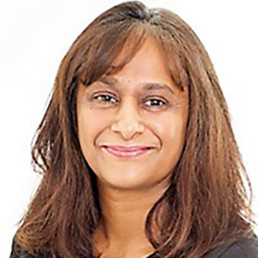
Written by Sonia Elmer-Soman
Sonia Elmer-Soman has a background in both law and education. She is a qualified law lecturer and has many years’ experience working as a legal practitioner in two prestigious law firms in the City and now within a reputable law firm local to her home town in Essex. She is also a qualified primary school teacher and is a guest writer for professional journals.
This blog was written for the National Association of Primary Education (‘NAPE’) and Primary First.
What is Unconscious Bias?
If statistics are to be believed, the Gov.uk paper on School teacher Workforce – Ethnicity Facts and Figures (2019) revealed that 85.7% of all teachers in state funded schools in England were white British. 3.8% of teachers were from the White Other ethnic group, the second highest percentage after the white British group and 92.7% of head teachers were white British whilst only 65.4% of pupils are from a white British background.
Whether we like it or not, we all exhibit unconscious bias in some way whether deciding which friend to honour a dinner date with when we’ve double-booked or making application shortlists that reflect our own cultural experiences. Unconscious bias is about patterns of behaviour that affect our everyday decision making and which are influenced by shared background, culture, and personal experiences.
Surely it is time to address the implications of unconscious bias within UK state schools? Of interest is how biases drive high turnover and high attrition among black Asian and minority ethnic (BAME) teachers, in a system where BAME pupils do not see themselves represented in the ‘school community’ and the ‘school community’ does not reflect how wider society or ‘Global Britain’ looks today.
Experiences of BAME teachers
- Tereshchenko, Mills and Bradbury (2020) shows us that the proportion of students and teachers from minority ethnic groups is disparate, meaning that BAME students and teachers may not see teaching as a viable option without role models to inspire. Research participants stated that they regularly experienced:
- being ‘passed over’ in senior promotions and hitting a glass ceiling which may not have been obvious at the outset. ‘I look at the people at my school that have been promoted or given opportunities to learn and they’re all white British’;
- a ‘culture of toxicity which took the form of micro-aggressions, covert bias and injustices’. ‘It matters what the culture of the school is, how they view ethnic minorities and if one walks around a school on interview and they don’t see diversity reflected in the pupils or staff’, then they would be ‘more likely to opt for a school which had encouraged and supported this’;
- a revolving door resulting in BAME teachers having to move to more diverse and disadvantaged/SEN schools in London in order to advance their careers;
- feeling that ‘wider social inequalities are mirrored and reproduced in school power hierarchies which underpin and drive BAME teachers’ unequal career progression’.
Examples of Unconscious Bias
However, it is not just in education where we see unconscious bias being played out. Channel 4’s Hollyoaks aired a powerful episode on the subject.
In one scene, Martine, a black woman, attends a cancer diagnostic appointment and is first to arrive at the surgery. Tara, a white British woman, arrives after Martine for the very same reason. The receptionist informs the two women that the appointment has been double booked and that only one of them can see the Doctor that day. Tara begins to cry. Martine awaits the decision in silence. The receptionist chooses Tara and tells Martine ‘Tara is clearly upset’ and ‘Have some sympathy’.
It is not unusual for NHS staff to have to make these decisions against the backdrop of a system which is overwhelmed and underfunded. However, Statistics show black women are twice as likely to be diagnosed with late-stage breast cancer due to systematic racism and misinformation (Morris, 2021). When Martine questions the receptionist, she is told to ‘ take a step back and stop being aggressive’. The writers skilfully make the point that the word ‘aggressive’ like intimidating are so often used against black people and people of colour who have ever dared to stand up for themselves. Seconds later, Martine tries to explain that ‘I have a lump too. I am terrified too’, but the scene ends with Martine standing outside in the cold whilst the two women make their way inside the surgery.
This will not have been the only problematic person or challenging situation Martine will have faced that day. For instance, where could she be in her job she wonders, if ‘it weren’t for so many barriers’. ‘The micro-aggressions are so subtle and covert it is hard to prove’. There is a sense throughout the episode that Martine must be’ strong’ and toughen up. Any injustice she feels must be borne with unflinching humility.
Parm Sandhu was the most senior Asian woman in the Metropolitan Police Force and the only non-white female to have been promoted to Chief Superintendent in the history of the Force. Her book entitled ‘Black and Blue – One Woman’s Story of policing and prejudice’ she tells of a challenging thirty year rise through the ranks of the Force where she faced racial and gender discrimination and spurious claims of misconduct after whistleblowing.
In her nail-biting account, Sandhu observes how persons of colour get the jobs and perform as well as, if not better in some cases than, their white British counterparts, but when they come to knock on that door for promotion or to raise a concern, the path is fraught with complexity and struggle and the rules are very different depending on who knocks.
So, could unconscious bias have played a part in the situation with Megan Markle? In her infamous interview with Oprah Winfrey, Megan spoke of the need to avoid polarising people and she found it hard being blamed for something ‘not only that I didn’t do’, but ‘that actually happened to me’. Megan’s quote ‘If you love me, you don’t need to hate her [Kate] and if you love her, you don’t need to hate me’ is the money sentence and will likely resonate. Megan felt she was often compared to Kate, with Kate usually coming off better because when one is faced with fewer battles to fight, they can concentrate on the battles worth fighting. One is far less likely to miss-step when not constantly on a back-foot.
What can Senior Leadership Teams and Ofsted do to improve recruitment and retention of BAME staff?
-
- Diversification of the workforce only occurs if there is an ambition and an appetite to make it happen.
- Look around your school. How many teachers or teaching assistants of colour do you see? Who sits on your leadership team and at the table of the Board of Governors?
- When advertising for teachers, try to advertise in two different demographics and avoid language as ‘will suit someone from the local area’, but rather you could advertise in such a way as to actively source and welcome applicants from the BAME community.
- Consider whether opportunities for training are open to persons of colour. What does that training look like?
- Is there a pattern as to whom you choose for advancement. As one of the participants in the earlier research paper commented ‘First level the playing field and then let’s talk about merit’.
- Move out of your comfort zone. Spend time with people from different cultures and backgrounds and see things from a different perspective. Less diversity means conformity of thought and exclusion.
- Ofsted could revise their reports avoiding language relating to demographic as being eg ‘mostly white British with lower than average children with EAL, a statement of need or pupil premium’ and they could also score schools according to if they have made some attempt to recruit and retain BAME staff.
- Provide opportunities to raise concerns with a diverse team. Use Gary Klein’s “premortem”. Imagine a decision or conflict leads to disaster and detail how it might have happened. Thus, search for overlooked problems.
- Be comfortable talking about matters involving race. Avoid language as ‘She is more English than us’ or ‘I don’t see colour’ as this only serves to invalidate a person’s background.
- Think about what social media platforms you share with your staff. Can you remain objective and professional if Facebook (staff) friends are commenting on every aspect of your personal life.
Conclusion
Schools roll out PREVENT training to staff, but do we really understand that those young people influenced into radicalisation are those who are in search of belonging and identity. However, we ‘prevent’ a sense of belonging when our institutions are not geared up to providing role models as part of a pupil’s lived daily reality. We are very good at teaching pupils about tolerance, equality and diversity, but we don’t show them what that looks like within the school environment.
In the wake of the George Floyd Killing, there was much emphasis on social media about ‘learning from it’ and ‘moving on’. Prima facie, this is an ideal but, in reality, how do you ‘learn’ and ‘move on’ if those uncomfortable conversations about colonialism, slavery and trade are not discussed in any meaningful way? This can leave young, vulnerable people grieving and in a situation which is inexplicable to them.
When we only look to recruit and retain those who conform to our own set of values and perspectives, we risk losing skills within the profession but also, we can inadvertently develop some negative and harmful cultures out of complacency, which can threaten the integrity of structural practices. If leaders only create other leaders in the image of themselves with replicas of models that already exist, what real steps have we taken to progress diversity and integration?
Senior Leadership Teams have a key role to play in making diversification of the workforce happen and in shaping the culture, vision and ethos of the school (see Benjamin Aishnine, who is Head of Equality, Inclusion and Culture at the British Medical Association and Racial Literacy at Integrity coaching).
References:
Aishnine, B. (2021) Aishnine. [Online] Available at: https://www.aishnine.com/
HM Government (2019) School teacher workforce. [Online]. Available at: https://www.ethnicity-facts-figures.service.gov.uk/workforce-and-business/workforce-diversity/school-teacher-workforce/latest
Integrity Coaching (2022) Coaching & Leadership Development. [Online]. Available at: https://www.integritycoaching.co.uk/
Morris, N. (2021) ‘We are not listened to’: Why Black women are twice as likely to be diagnosed with late-stage cancer’, 27 April, Metro [Online]. Available at: https://metro.co.uk/2021/04/27/black-women-are-twice-as-likely-to-be-diagnosed-with-late-stage-cancer-14475521/
Sandhu, P. (2021) Black and Blue: One Woman’s Story of Policing and Prejudice. Atlantic books.
Tereshchenko, A; Mills, M; Bradbury, A; (2020) Making progress? Employment and retention of BAME teachers in England. UCL Institute of Education: London, UK
What DEI Metrics are you using to measure the impact of your strategic actions?

Written by Hannah Wilson
Founder of Diverse Educators
We are data rich when it comes to the students in our schools, but we are data poor when it comes to our staff.
Any organisation leaning into a DEI strategy and action plan needs to consider the data that they have, and the data that they need to have, to inform the why, the how and the what of their approach.
I find that the CQ framework helps us to think about the cyclical steps we need to take to gather, interpret and act on our DEI data:
- CQ Drive: Why do we need to gather DEI data? Are our intentions clearly being communicated?
- CQ Knowledge: What do we need to know about our workforce and workplace? How psychologically safe do employees feel?
- CQ Strategy: How will we gather meaningful data? How will this data be handled and shared?
- CQ Action: How will this data be used to inform our next steps? How will this data make our workplace more inclusive?
DEI Metrics in a school / trust thus need to include:
- Baseline data
- Benchmarking data
- Progress data
- Qualitative data
- Quantitative data
- Stakeholder engagement data
- Stakeholder feedback data
- Recruitment, retention and promotion data
- Salary data
We need to remember that this data is about human beings.I once heard a school leader say, we need to focus on the ‘names not the numbers’ in our data trackers in schools. Each piece of data is thus a story, a story about a person.
So this data needs to be handled with care. DEI data is asking people to share their identity, their lived experience and to disclose personal details. This can only happen in a culture of intentional trust and psychological safety.
Moreover, the data needs to be handled in an intersectional way. We need to look at trends within groups but also across groups, for example, pay progression for men v women, pay progression for white v black employees, pay progression for white men v white women v black men v black women.
Recruitment and retention data is a great place to start:
- Who are we attracting?
- Who are we longlisting?
- Who are we shortlisting?
- Who are we interviewing?
- Who are we recruiting?
- Who are we promoting?
- Who are we retaining?
- Who are we losing?
Some other questions for us to discuss before we create and send out a staff survey.
How do we measure diversity?
Conventional measurements rely on counting the number of people within an organisation who belong to each of the protected characteristic groups, as identified by them.
How do we gauge how people feel about the culture of their workplace?
Employee feedback is one of the most useful data sources for measuring inclusion, especially when leaders can use a “pulse,” a quick survey, to check in with employees without adding to distractions. The challenge, however, is in first establishing the right metrics and then asking the right questions.
How do we frame a DEI survey?
To create a DEI survey that captures employee attention and gets engagement, there are a number of factors to consider:
- Creating Inclusive Demographic Questions
- Making the DEI Survey Anonymous
- Making Questions Non-Required
- Being Forthcoming With Intent
- Using Expert Resources
What is a DEI dashboard?
A diversity, equity, and inclusion dashboard is an interface that provides companies with a visual representation of their current diversity, equity, and inclusion practices.
How do you create goals for DEI initiatives?
- Define goals using benchmarking data
- Measure outcomes, not just output
- Focus on retention, not just recruitment
- Review inclusion, not just diversity
- Use surveys to measure inclusion
How do you measure DEI effectiveness?
- Resources/ funds allocated to DEI strategy
- Number of diverse employees across the organisation
- Percentage of diverse employees in leadership positions
- Investment into development programmes for diverse employees
- Gap in pay between different demographic groups
- Length of time diverse employees stay with the organisation
- Feedback in exit interviews from diverse workforce
- Number of incident reports e.g. microaggressions
To help you think about the data you are, and could be, using we are hosting a series of free DEI Metrics webinars with some of our collaborative partners, so that you can find out more about their tools to help you measure DEI in your school/ trust.
3 teams, 3 platforms, 3 solutions:
- On Fri 21st October 12.00-1.00pm we will be joined by the Edurio team
- On Mon 7th November 12.00-1.00pm we will be joined by The GEC team
- On Thu 24th November 12.00-1.00pm we will be joined the Flair Impact team
Register to attend but also to receive a link to the recording of each session.
be seen. be heard. be known. belong.
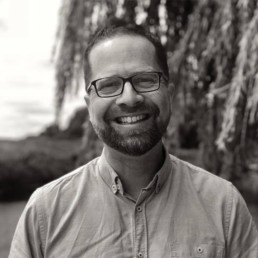
Written by Matthew Savage
Former international school Principal, proud father of two transgender adult children, Associate Consultant with LSC Education, and founder of #themonalisaeffect.
I am increasingly of the opinion that every piece of policy and practice in our schools should intentionally centre, and be grounded in, both the pursuit of #deij and putting and keeping #wellbeingfirst. These are, for me, the two golden threads of education.
Consequently, and necessarily, all of the work I do with schools across the world is interwoven with these threads at all times. This is why my mission, as we step into a new academic year yet burgeoning with possibility, has been adapted fully to reflect this.
It is too easy for us to be distracted by other, competing priorities, forgetting that to have too many priorities is to have none. Therefore, now seems as good a time as any to revisit and reset our own.
I believe that every single member of each school community has a fundamental, inalienable and unconditional right to “be seen, be heard, be known and belong”. And I believe that it is my duty to embed and protect that right in everything I do.
We must each be seen for every intersecting identity that makes us who we are, throughout every stratum of what I call the ‘5 Cs of visibility’ – communication, curriculum, campus, climate and culture. We can, and must, audit this, in order to make sure it happens.
We must each be heard, and listened to, honestly, openly, actively and often, so that our voice, and the collective voice of our communities, inform and infuse the decisions that our made on our behalf. Student, staff and parent voice initiatives need to be authentic and systemic.
We must each be known, not for the masks we wear, thickly and well, but for the messy bundle of pains and passions, pasts and futures, needs and strengths we inhabit when not trying to comply, conform or perform. This is where data – hard and soft, cold and warm, satellite and street – must play a part.
And if, and only if, we can each enjoy each of these three things, whether we be parent, staff or student, can we begin to belong, a vital, valued and vocal part of our school. And if we belong, then we can begin to thrive, for it is when thriving that the holistic outcomes, of individuals and of teams, are optimised.
As an educator, as a leader, what will you do this year to help ensure every single member of your school community be seen, be heard and be known, in order that everyone can truly belong?
The Anti-Racist Journey of a Secondary School in Manchester
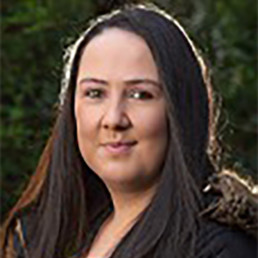
Written by Laura Morris
Laura Morris (@MissMorrisManc) is head of RS and Citizenship at a secondary school in Gorton, Manchester, with additional whole school responsibilities for SMSC and anti-discrimination. She has been teaching for 15 years. Her website is MissMorrisManc.co.uk.
Before the Black Lives Matter mobilisation of 2020, and all that followed, staff at the school I work at in Gorton, Manchester, would largely have felt positively about the work we were doing to celebrate our students, myself included. We went all out for Black History Month every year with relevant lessons across departments and external visitors invited in (as showcased in this video from October 2019), we had very few complaints of racist incidents from the students, and some work had been undertaken to decolonise the curriculum, particularly in subjects like RS, Citizenship, History and Geography. We could pat ourselves on the back for a job well done!
With all the work we’ve done since, and the huge changes that have been made, I now feel embarrassed to reflect back to pre-2020 when I thought we were already doing enough for our students. We weren’t.
Before we broke up for summer this year, I wrote a report detailing what we’ve done so far with the hope it could give ideas to other teachers and save them some time if they are starting from scratch. It’s been a process of trial and error and, while we’re still far from perfect and keen to collaborate with other schools to help us further improve, I am confident that we are now having a much more positive impact on our students in making them feel seen, appreciated, safe and loved.
In this blog I will summarise the most important parts from the report for people who are keen to improve the anti-racist practice in their school.
Named members of staff
Towards the end of the 2020-21 academic year, my colleague Ben Wilson was given a TLR to focus on anti-discrimination work in the academy and I was made associate assistant head with the same priority, which I realise puts us in a very fortunate position. Our head teacher included this anti-racist work as an objective in the school improvement plan and believed it was necessary to appoint people in posts to achieve our goals. I can’t stress enough how important it is for all schools to be willing to give time and money to staff doing this work and can only hope the example from our school will help other teachers feel confident to take similar proposals to their head teachers.
Staff groups
If I had to single out the most impactful elements of our process, it would be the staff and student groups. So many changes have been made but it’s hard to think of anything we’ve done that didn’t first come from conversations held in these spaces.
I realise how lucky I am to work alongside enough people who recognise the institutional racism present in education and were prepared to give up their time to do something about it, and that’s how the anti-racist working group (ARWG) was formed in September 2020.
We created sub-groups, each taking responsibility for a different area that we decided needed to improve, like the behaviour system and reporting incidents of discrimination, student voice, the curriculum, and staff CPD.
If you don’t feel as though you’ve got enough members of staff with the interest or time capacity to take on this work, there is no need to panic, as it is the students who have guided so much of what we’ve achieved. They are the experts and are invaluable to bringing about change.
Student voice
Student meetings started in early May 2020 during lockdown on Zoom with organisations like Kids of Colour (who still lead student meetings half-termly) and The Black Curriculum, and continued informally during lunch times when we returned to school the following academic year. It became clear how important it was for our young people to be given time to talk about their experiences of racism both in and outside of school.
At the start of the 2021-22 academic year we interviewed Year 11 students for anti-discrimination ambassador roles. They decide the agenda for the separate fortnightly KS3 and KS4 meetings, which are held during the 30-minute form time slot, lead the discussion, and, while I am in the room (to take back any pressing concerns to the ARWG), the ambassadors take responsibility for the meetings. Students discuss their personal experiences outside of school, what they believe needs to change in school, and anything that is going on in wider society that they would like to talk about. Any students who don’t feel comfortable reporting incidents of discrimination to teachers can go to the ambassadors who then feed back the details to Ben or me.
One of last year’s anti-discrimination student ambassadors said: “I feel like having this space for students is really important because we come together as a community to discuss issues that really matter to us and we think of ways to resolve it and deal with it.”
We have an annual anonymous anti-racist student survey, to help us identify issues that may be affecting students who don’t attend the meetings, and the student groups have delivered assemblies in response to the feedback to educate all students on discriminatory behaviour they might knowingly or unknowingly be perpetuating.
Towards the end of the 2020-21 academic year, Year 11 students wrote down examples of times that staff had said or done racially or culturally insensitive or offensive things. I recorded them reading out the statement of another student, to ensure anonymity, and played the video to staff during a CPD session.
Hearing the accounts woke up so many members of staff to the experience of the students, which has meant that all the work that has followed, that has resulted in an extra time commitment for pretty much everyone working in the academy, has been easier to achieve. There’s little room to question or complain about the need for change when you have student testimony to support the cause.
Discriminatory incidents
Discussion in the student groups highlighted the need for us to better deal with incidents of discrimination between students. Racism was very rarely reported but feedback from the student groups revealed this was down to the students feeling as though nothing would happen as a consequence, either because they had reported something in the past and hadn’t heard how or if it had been dealt with, or their belief that it wasn’t a priority for staff.
Ben created a reporting system (that you can read about in more detail in the report), which was trialled at the end of the 2020-21 academic year and put in place the following year, which has currently significantly increased the workload of staff who deal with behaviour incidents. But it has also meant we are in a much stronger position to educate and sanction students involved in discriminatory behaviour, as well as validate the feelings of, and bring resolution to, the victims. Different forms of microaggressions are the most commonly reported incident and students have responded incredibly well to the educational sessions they attend with Ben or me as a consequence. Victims are given the opportunity for a restorative conversation, once pre-restorative work has taken place with both students, and they almost always choose to take up this offer in the process.
The number of repeat offenders is minimal, if not close to non-existent. But the number of reported incidents has increased. Students now have the confidence in the school to respond appropriately to accusations of discrimination.
As one of last year’s ambassadors put it: “when I look back at when I was in Year 9, if someone said something racist to me I would just go home and cry. But now I would feel empowered enough to report it and I hope younger students feel that way too.”
Curriculum changes
All subject leaders completed The Key’s anti-racism curriculum review document, which identified areas for improvement for departments already on the journey of decolonising their curriculum and served as a fantastic starting point for teachers who didn’t know where to begin.
After being given department time to plan and create new resources, we’ve had a carousel format for whole school CPD sessions to share these across departments. Most departments now have a member of staff with an objective in their appraisal relating to diversifying their curriculum. During the carousel CPD we have a ‘speed dating’ format where staff spend a few minutes listening to the changes each department has made, and having discussions on the impact and any possible cross-curricular links, before moving on to the next department.
We recognised the need to better signpost these changes to students. Bennie Kara delivered a bespoke CPD session for our staff last December where she suggested posters to be placed around school. Now every classroom has a subject specific poster highlighting content relating to race (as well as sexuality, gender and religion) in our curriculums. Before breaking up for summer, subject specific PowerPoints were shown to all students too so they knew what to expect in the year ahead. Examples of what we teach can be found on our school website.
For more details on the processes above as well as other initiatives we’ve implemented, check out the report in full. Feel free to reach out to me on Twitter too!
Building a Multi-Faith Space
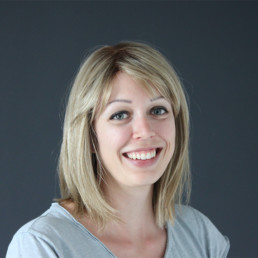
Written by Hollie Panther
DEI Lead, Mental Health First Aider, secondary Science & Psychology teacher and Teach First Ambassador.
Experiences of, and learnings from, establishing a space for prayer and celebration of religious diversity in a secondary school.
The last school I worked in had a majority non-religious student population, but a diverse spread of religions among those who did follow a faith; many religions had just one follower within the student body. A parent of one such student had mentioned that they were uncomfortable being open about their faith due to the amount of discrimination they’d received in the past. As D&I Lead, a large part of my strategy to improve religious inclusion in the school was to open a Multi-Faith Space. When I started, there was no designated place to pray; my previous school did have a prayer room, but it was hidden away and only students or staff who asked about it were encouraged to use it. I wanted to create a space that people from all religions could use, so that it would encourage some sense of community, which I thought those who were the solo followers of their faith within the school might’ve been lacking. I also wanted it to be a place of celebration and curiosity, so that any student could learn about diverse faiths if they wanted to. The space was initially opened as a work-in-progress during Ramadan, to give Muslim students a place to pray and be away from food if they needed it. During this time I also designated a toilet block for Wudu, the practice of washing before prayer, and delivered whole school talks educating students about Ramadan and how to support students who were fasting. Feedback from this was unsolicited and overwhelmingly positive — parents of Muslim pupils wrote in to the school to congratulate and give thanks for the ‘exemplary inclusion effort for Ramadan’; my wish is for this approach to Ramadan to become the norm in all schools, so all pupils can celebrate the diversity of religious practices alongside one another.
Working alongside the Multi-Faith Space was the Religion & Spirituality Society, which I established as a student-led club who met at lunchtime to explore and learn about various religions. The leaders of the society planned activities and presentations for the group, and brought in occasional themed snacks too — I’m hoping the society will meet in the Multi-Faith Space going forwards, to ensure they are surrounded by diverse religions, with the opportunity to learn about them being easily accessible.
The Multi-Faith Space is two small rooms off of the Library, where I have put up shelves on each wall and designated each of the six walls to a major world religion (Christianity, Islam, Judaism, Sikhism, Hinduism, Buddhism). I reached out to religious leaders in the community to see if they would be happy to donate a copy of their religion’s text or any artefacts that could go on the shelves. This took the form of finding email addresses of local Mosques, Churches, Gurdwaras etc, or filling in contact forms on their website, and Googling ‘free copy Jewish, Hindu, Buddhist etc text’, and making sure in my message I invited them to send my request on to anyone else they thought might be able to help out. As a result of this I had an incredible array of items gifted to the Multi-Faith Space by several local religious groups, and had an insightful and useful meeting with the representative of Judaism from the West Sussex SACRE (every county council have representatives of world religions, who are keen to come into schools to deliver lessons / assemblies etc on their religion, I’m hoping the next D&I Lead and teachers of RE will be able to make use of this otherwise untapped source after my introductions — none of the RE teachers in the school had heard of them). Several sources of items and books posted them to me or dropped them in to the school, but I also visited several organisations to collect their donations, which I really enjoyed, as it took me to places I wouldn’t have ordinarily visited within my local community.
I organised a Grand Opening for the Multi-Faith Space to which I invited all the local contributors, as well as staff and religious students. The student leader of Religion & Spirituality Society was invited to cut the ribbon; it was a great opportunity for me to connect up school staff and the pupils who will be running the Religion & Spirituality Society next year with community religious leaders (over donuts and cookies), so that they are able to lean on them for support with the society and also with RE teaching as the school grows. One community attendee at the Grand Opening came from the Baháʼís, a religion I admittedly hadn’t heard of when they initially made contact, but which I learnt much about through talking to this local follower at the event. They also donated several items and books to the Multi-Faith Space, and though they didn’t have a designated wall and shelves, I set up a table in the space to display their information, and was really glad to be representing a greater diversity of faiths than I had originally planned for.
I had a student volunteering with me for their Duke of Edinburgh’s Bronze award, who helped me plan the space and also worked in the Design Technology (DT) room on a signpost to go outside of the Multi-Faith Space, which featured laser-cut arrows, each one with a different place of worship on it — ‘Hindu Mandir’, ‘Sikh Gurdwara’ etc. Unfortunately, because the student could only work on this under supervision by the DT teacher, due to technology issues and absence, the sign was not finished in time for the Grand Opening — I look forward to seeing photos of it in pride of place when it’s completed in the Autumn term.
My advice to anyone thinking about building such a space would be to absolutely go for it — the only spend was on the shelves and snacks for the Grand Opening, as well a couple of items to represent religions who didn’t get back to me to contribute anything. The rest was furniture that was already in the school, and the items and books gifted by the religious community were invaluable — so it’s doable on a tiny budget, I would just encourage anyone wanting to build one to start early, and get your message with the call for help / donations really clear and send it to as many people as possible, ideally alongside an invite to a Grand Opening — and then chase them up if they haven’t replied; I got the impression that everyone wanted to help, but that sometimes there are multiple people within a place of worship who read the emails, so they may not get picked up the first time around.
On the whole, I really enjoyed building the Multi-Faith Space and I’m really proud of what I achieved with this — the Grand Opening was on my penultimate day working at the school, so it really feels like a legacy I’m leaving behind; a tangible asset to the school community that will continue my work without me.
Going Upstream - Lessons from Building a Systemic, Digital Wellbeing Service

Written by George Metcalfe
George is the co-founder of Tranquiliti, a new digital service that transforms the ability of schools to support wellbeing.
“There comes a point where we need to stop just pulling people out of the river. We need to go upstream and find out why they’re falling in.” Desmond Tutu
For years we have worked at Tranquiliti to develop a service that helps schools take a proactive and preventative approach to student wellbeing that reflects this sentiment, and I wanted to share some of what we’ve learnt in the process.
In designing our system we have spoken with dozens of pastoral leaders from a wide range of schools, from a state school in London where over 85% of students have EAL, to a grammar school in Kent, to PRUs in Yorkshire, and in these conversations we have always started with the same questions:
“What does your school do to support student wellbeing, what challenges are you facing around wellbeing at the moment, and what are your hopes for the future?”
The responses we’ve received show that almost universally schools’ perception and approach towards wellbeing is changing.
When asked about their current provision most schools talk about the counselling on offer or their support hub. The focus tends to be on the identification and support of students facing difficulties, and the words “mental health” and “safeguarding” are mentioned. In this way, wellbeing has been negatively conceptualised, with poor wellbeing being seen as something to address rather than positive wellbeing being seen as something to promote.
This is hardly surprising, as when I then ask about what challenges leaders are facing, the answer is usually that they are overwhelmed with the number of students experiencing problems, and so their focus is naturally on firefighting.
However, young people’s wellbeing has been in decline for over a decade now, and with the pandemic exacerbating existing trends, this firefight is becoming increasingly unsustainable. That’s why when we speak with schools about their hopes for the future, their ambitions often centre around promoting positive wellbeing in every student and building school environments that stop concerns developing in the first place.
Unfortunately, this is very difficult to achieve, not least because of limited time and resources, but we’ve identified three things that schools can do today to help promote wellbeing across the whole student community. These are – build conceptual clarity, gain visibility, and develop the capacity to act.
Conceptual clarity
Wellbeing can sometimes be a vague term. By having a shared language of what you as a school mean when you talk about wellbeing, it makes it much easier for staff to see how it relates to their day-to-day activities. For example, the CASEL model in the US is a great tool to use to highlight how social and emotional literacy, the classroom environment, and the school climate are all impacted by teachers and leaders, and to show how when they are promoted they in turn support learning and protect against poor mental health. Lastly, when you have a common definition for wellbeing, you then know what to measure…
Visibility
Too often there is a lack of data and insight around wellbeing. By giving staff a regular picture of how their students are feeling, wellbeing can become a tangible aspect of school life that can then be developed collaboratively. Data can also form an interface for more informed conversations and stronger relationships between students and teachers, and ensure student voice plays a significant role at every level – from the design of the PSHE curriculum through to the development of new policies.
The capacity to act
Lastly, as a sector we have to get better at answering the question “what next?”. So often wellbeing is measured with little in the way to support action. By providing all students and teachers with high-quality resources, training, lessons, and interventions, everyone in school can be given the skills and tools needed to promote wellbeing.
At Tranquiliti, we have developed a joined-up service that achieves these three aims and in doing so transforms the ability of schools to promote wellbeing, but there are other ways of achieving similar outcomes.
The challenge schools face in becoming truly proactive in their approach to wellbeing is significant, however, the need for this change will only continue to rise. Young people are growing up in an increasingly complex world and in order to thrive they will need support in developing emotional maturity and resilience. We believe a systemic approach is needed, and that technology can play a central role in helping schools stop young people “falling in”.
We are currently testing and developing our service with a community of committed schools, researchers and experts. If you would like to join our community then you can book a call with me here – we’d love to hear from you.
Education DEI Calendar 2022-23

Written by DiverseEd
Diverse Educators started as a grassroots network in 2018 to create a space for a coherent and cohesive conversation about DEI. We have evolved into a training provider and event organiser for all things DEI.
We know that it is really hard to keep on top of all of the awareness and celebration days, weeks and months to include in the school calendar!
We also appreciate that it is equally difficult to know when to schedule/ host a DEI event without causing an unintentional clash or how to find out what DEI events are happening.
So we are proposing a work-in-progress solution which will evolve and grow as others contribute to it to co-create a comprehensive resource to make all of our lives a little bit easier…
The Education DEI Calendar 2022-23 is a draft – it is not perfect, it is not complete and it is in no way trying to exclude any key dates! Please bear that in mind as you review it and share solutions instead of problems if there are things you would like to suggest we add/ change as it evolves.
At the moment it captures lots, but not yet all, of the key dates from the following free resources which we signpost to people in our network:
- The CIPD Inclusion Calendar 2022
- The Dual Frequency Diversity, Equality and Inclusion Calendar 2022
- The Inclusive Employers’ Diversity and Inclusion Calendar
- The James Wants to Know You Diversity Calendar
- The NAHT Equality, Diversity and Inclusion Calendar 2022
- The NHS Diversity, Equality and Inclusion Events Calendar 2022
We have collapsed lots of these dates into a spreadsheet to make it more educator-friendly – so that you can filter by month, week, day and date to see what is going on. (You could also copy and paste it alongside your school calendar or your school’s assemblies schedule to cross-reference where themes are being explored).
We have not yet added all of the religious and cultural days as this will probably need another column as there are so many dates to be aware of. This will be the next layer of detail so keep checking back as it evolves over the summer break ready for the new academic year and start of term.
Note that when there is more than one theme on any given day/ week/ month we have sorted them by A-Z so that there is no perceived hierarchy. Also that when an awareness week is split across two weeks we have shifted it to the week it falls in the most.
Remember that you always have creative license to make these dates work for you, your school and your community – for example, some themes might need an awareness assembly before it falls on the calendar, others may require a celebration event following a key date. Consider how to streamline how many of the dates you want to mark so that it does not create overwhelm for staff nor students.
We have highlighted the weekends for all of the grassroot networks who host DEI events – the idea is that organisations in our network will be able to edit/ add dates of events with contact details and links to register/ book a ticket.
Do help us grow and improve the Education DEI Calendar 2022-23 by making suggestions and giving us feedback here. We hope you find draft 1 helpful to get you started!
Wellbeing: Why it’s Time to Take an Ecosystemic Approach
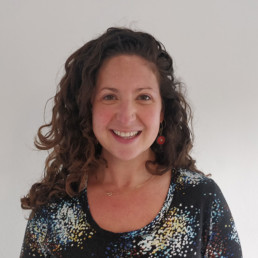
Written by Nikki Levitan
Nikki started The Visionaries out of her passion and commitment to supporting young people and those working with young people to discover their visionary potential. She helps to resource others to play their part in building a healthier, just future.
A whole systems approach to wellbeing is a growing buzzword and tactic, one that is becoming higher up on the agenda to improve productivity, retention and a sense of belonging within the workplace.
The science of wellbeing also shows us the importance of taking a preventative approach to prevent mental health reaching crisis point later down the line. Something that is still all too common amongst young people.
But when it comes to changing a whole system and culture, it is natural to feel a sense of stuckness and overwhelm.
“The only way to make sense out of change is to plunge into it, move with it, and join the dance.’ – Alan Watts
A great way to explore how to enact lasting systems change is to look at the healthy functioning of natural ecosystems, like a rainforest or a national park. They remind us of the importance of diversity, interdependency, collaboration, and to embrace cyclical thinking. We can use these as a way to reflect on and improve our own education systems.
Like the species within an ecosystem, members of your organisation act like a community network of interactions between organisms and their environment. They create together, influence one other and are all affected by external disruptions and change outside of their control.
At The Visionaries we are passionate about supporting youth organisations. Burnout and endless firefighting is a common reality for teachers, youth workers and informal educators. Many struggle to take the time to look after themselves and leave working days feeling a sense of helplessness, wishing they knew how to do more to support the needs of the young people.
This cannot be left on the shoulders of individuals, none of us has this capacity to hold what we do alone. As the saying goes, “It takes a village to raise a child”, and it is only when entire organisations, institutions and communities commit to a culture of wellbeing that the mental, physical and social health of their members and beneficiaries can truly be supported.
Our one day training on 31st May 2022 will give you space to explore your work within an ecosystemic framework, providing simple ways to weave wellbeing into the everyday culture of your organisation, that anyone can lead, and which can be put into practice immediately.
You can expect;
- Self and collective enquiry: How do we create a culture of wellbeing? What does it mean to be well individually/collectively? How does tending to our wellbeing have a positive impact in communities we are part of?
- Appreciative Inquiry: Discover what you are already doing well; Dream into what could be; Design what should be; Deliver what you can do and how to do this.
- An introduction to our ways of wellbeing – We apply biomimicry and nature’s intelligence to enhance our education systems for the long term.
The intention is for you to retreat: come away from your busy work environment, slow down, tune in, learn together and create space to map out your ecosystem. Who is in it? What roles do they play and what needs to happen to affect positive change for the whole?
See more details here and book your place now, there are only a few spaces left. We keep these training days small and intimate to ensure space for deeper enquiry and relationship building between education leaders.
https://www.tickettailor.com/events/thevisionaries/673864
You can see our full Regenerative Educator Training Course online here and see the other ways we support educators to create more life-affirming learning environments on our website here.
DEI in an International Setting

Written by Esther Mustamu-Daniels
Esther Mustamu-Daniels has 20 years of teaching experience working in London and the Middle East as a Class teacher, Education officer, Middle Leader and DEI Lead. Currently working at British School Muscat, Esther co-leads the DEI work across the whole school.
Many international schools are on or starting their journey of awareness of diversity, equity and inclusion. Because cohorts in these schools are so diverse by nature, often staff feel that there are no problems and that racism/discrimination is not a factor in the schools. This is usually very far from the truth.
Be brave; be vulnerable and start the challenging and honest conversations that are needed for change to take place.
Because of recent high profile events, diversity, equity and inclusion is a necessary space in all educational settings and that international schools, who send their alumni to universities all over the world, would do well to support, inform and equip students with knowledge and language to engage with the different topics around DEI.
How do schools start tackling, delivering and addressing these needs?
Start with the staff: build open conversations. It is important to know that not everyone is at the same place on their journey and also that there are different opinions. Gathering the ‘tone’ of your school as well as allowing safe spaces to share experiences is a key factor. What is important is that this is not only talk; action is also needed. This is an emotional and difficult journey so be sure to provide space and time to reflect and learn.
Action: Build a plan of how you will move forward. You may need to conduct a survey or gather some research and data from your school’s stakeholders to help you focus on what the priorities are in your specific setting. Are there specific needs or policies that need addressing first? This will help to focus on each step and also assign roles or tasks to specific people. This should be flexible so that it can be adapted along the way.
Leadership: Is there someone leading the work? Do SLT support and value the work being done? Does your leadership understand the why and how? This is important because without this it is extremely difficult to implement significant change. Leadership needs to take accountability for the work being done in their school. Is that person being paid?
Support: This is also an essential element. Who is supporting the people completing the work? Are they being emotionally supported as well as practically? The people leading or sharing this work may have been personally impacted or triggered by the issues raised; how are they being supported?
What is important to note is that action in any form is good and a positive step in the right direction. Addressing and tackling these issues will take time and for long lasting impact will need to be embedded in the culture of your school or environment. This is not a badge or a t-shirt; this is a cultural shift of readdressing mindsets.
If you are involved or starting up; learn, speak and support. Being an ally and everyone doing their part is imperative. There is so much work being done at the moment. Twitter is an excellent source of examples, webinars and organisations that can support you on your journey.

